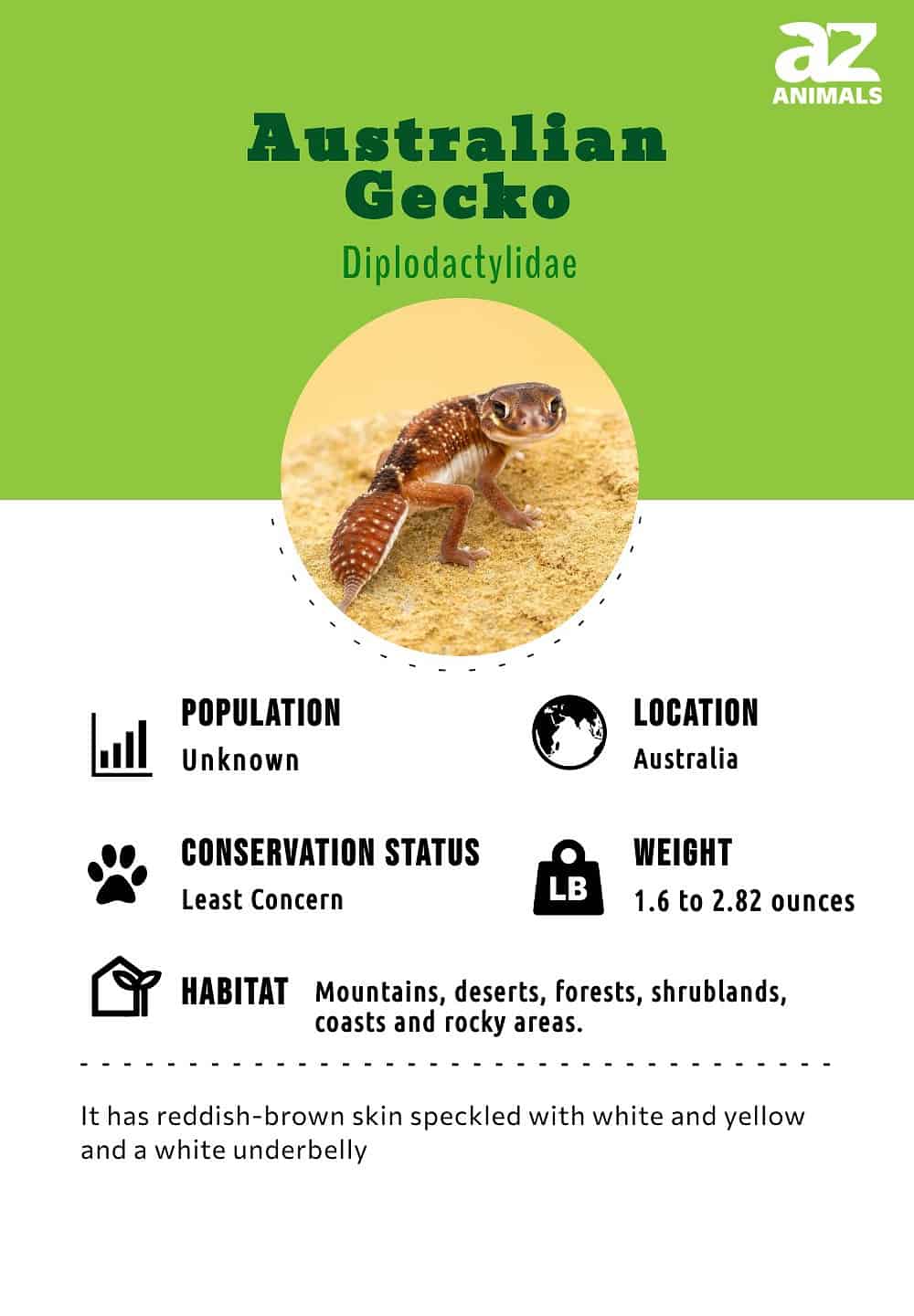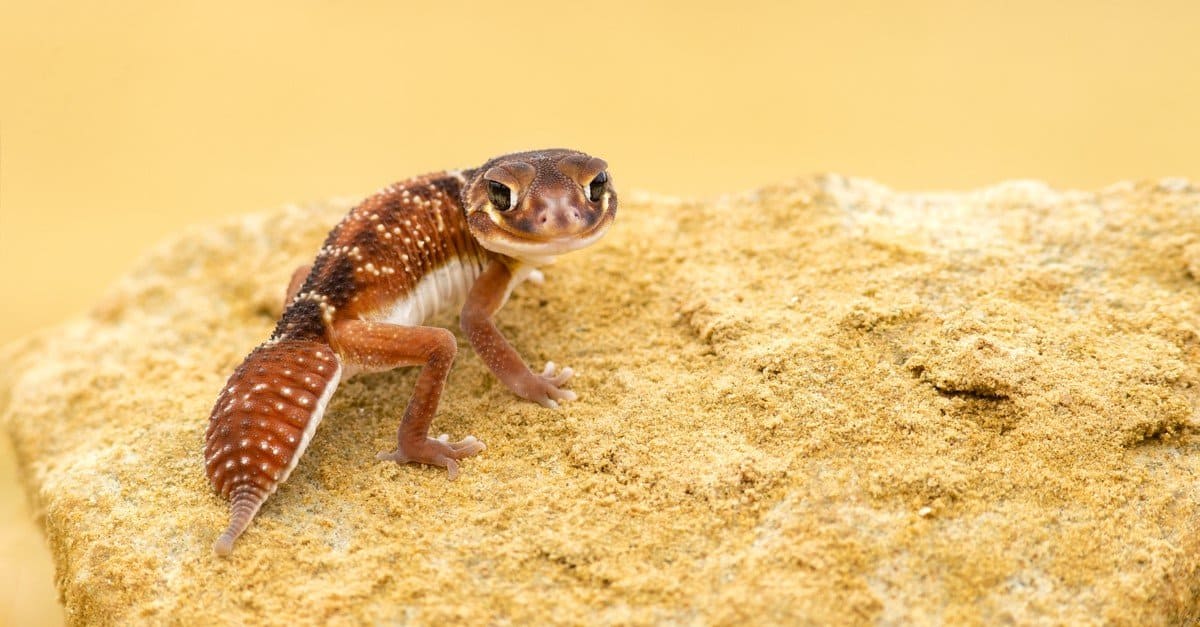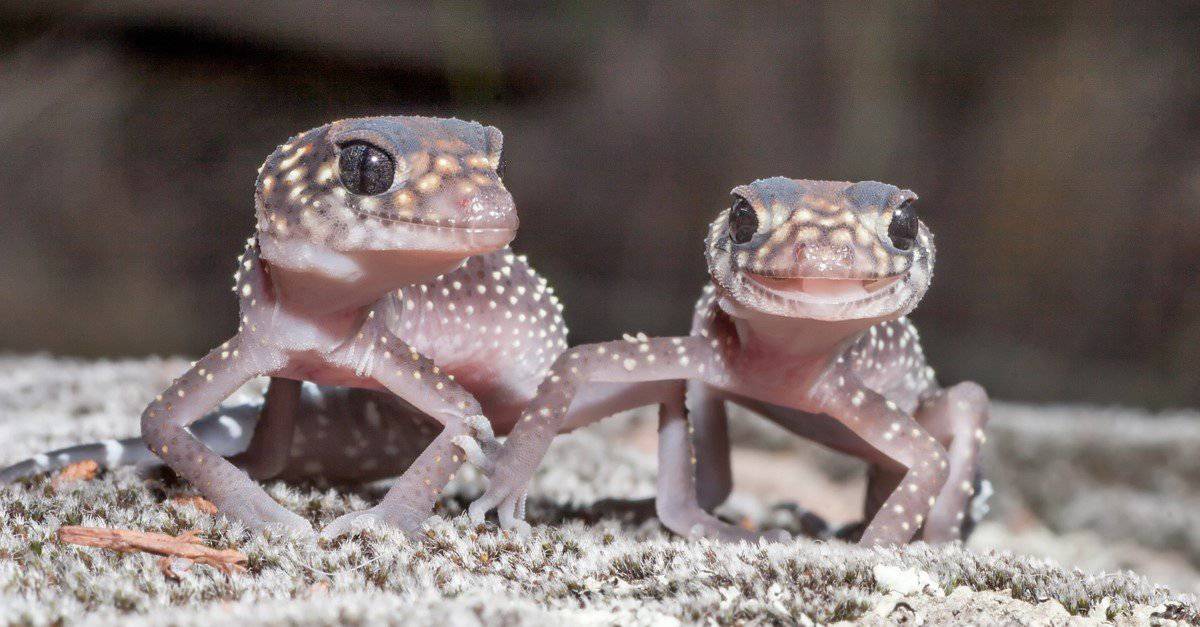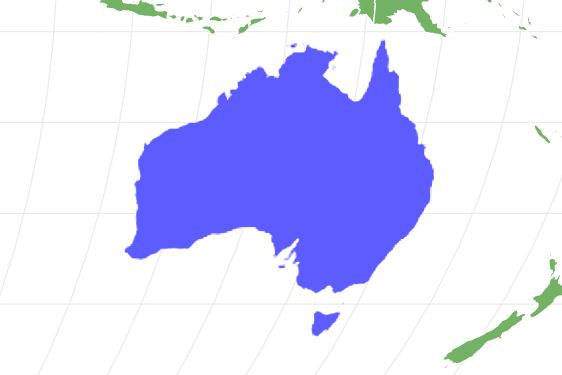Australian Gecko
Geckos have 100 teeth and continually replace them.
Advertisement
Australian Gecko Scientific Classification
Read our Complete Guide to Classification of Animals.
Australian Gecko Conservation Status
Australian Gecko Facts
- Prey
- Insects, smaller lizards, invertebrates
- Name Of Young
- Hatchling
- Group Behavior
- Solitary/Group
- Fun Fact
- Geckos have 100 teeth and continually replace them.
- Estimated Population Size
- Millions. Conservation status of many of these geckos is least concern.
- Biggest Threat
- Illegal pet trade
- Most Distinctive Feature
- The ability to climb up just about anything, including glass.
- Other Name(s)
- Moon lizard, Tayoto, nactus, dtella, chichak
- Gestation Period
- 30 to 80 days
- Litter Size
- One or two eggs
- Diet
- Omnivore
- Type
- Reptile
- Common Name
- Australian gecko
- Location
- Australia
View all of the Australian Gecko images!
“The Australian Gecko is the most common lizard in Australia!”
Geckos are so common in Australia that a visitor or inhabitant can find them just about everywhere. They’re in the forests, in the homes, on the beaches, in the deserts, and even in the mountains. They’re under rocks and logs and tree bark and kitchen sinks. Surely one of the most successful animals on earth, these small, beautiful, and somewhat bellicose reptiles are simply fascinating.
5 Incredible Australian Gecko Facts!
Here’s a list of five facts about the Australian gecko:
- Scientists study the pores in the gecko’s skin to find out what species it belongs to.
- Australian geckos don’t have eyelids. Their eyes are protected by a transparent membrane, and they take care of them by licking them clean.
- Most Australian geckos reproduce sexually, but the mourning gecko on Cocos Island and Bynoe’s gecko produce parthenogenetically, without the aid of a male.
- Most are nocturnal, and they have evolved to have nighttime color vision 350 times more accurate than a human’s.
- Like many lizards, a gecko can detach its tail if the tail is grabbed by a predator.

Evolution And History

Australian barking Gecko has a common ancestor with the genus Gekkonomorpha.
©davemhuntphotography/Shutterstock.com
It is believed that an ancestral species of geckos, having originated in Asia and the Indo-Pacific regions, most likely invaded Australia, which is when they divided into the multitude of species that are found there today. This lizard species all have a common ancestor within the genus Gekkonomorpha and is thought to have been living during the middle of the Cretaceous era, about 100 million years ago, when the oldest known fossils have been found. These fossils have adhesive pads on their feet, which is similar to the modern-day geckos.
Scientific Name
There are at least 60 species of geckos that are endemic to Australia. Some of these species have subspecies. They come from at least three families and 10 genera, including subfamilies. Families and genera have names such as Strophurus, which means “bent tail” in Greek. This describes the posture of these geckos before they fling noxious goo at a would-be predator. Phyllurus means “leaf-tailed,” and describes the shape of the tail of such geckos as Phyllurus platurusm, the broad-tailed gecko. Diplodactylidae comes from the Greek word for “double toed,” while Hemidactylus is Greek for “half-toed” and Lepidodactylus is Greek for “scale-toed.” Nactus means “stumbled upon” in Latin and refers to the zoologist Arnold Kluge having come upon the lizard by accident.
The names of a good number of Australian geckos come from the names of people, places, or even things. Nactus cheverti was named after a ship called the Chevert. The Underwoodisaurus genus was named after Garth Underwood, a British herpetologist. The name, naturally, means “Mr. Underwood’s lizard.” Phyllurus championae was named after Irene Champion, a ranger for Queensland Parks and Wildlife. Because she’s a girl, the word is championae instead of championi.
The common house gecko isn’t native to Australia but is native to Southeast Asia. Only about 4.5 to 6 inches long, it has managed to stow away on many a ship and is now found in warmer climates all over the world.
Appearance

Nephrurus levis, commonly known as the three-lined knob-tailed gecko, smooth knob-tailed gecko, or common knob-tailed gecko, is a native Australian gecko species.
©Milan Zygmunt/Shutterstock.com
Australian geckos have the usual gecko appearance, which makes them unmistakable. Most are between 0.64 to 6 long with a weight of between 1.6 and 2.82 ounces. Males are bigger and heavier than females.
Like most lizards, the gecko has four developed, splayed-out limbs. It has five bulbous toes on each foot and usually a long, detachable tail. The first toes of geckos native to Australia lack a claw, unlike the common house gecko. Some geckos, like the leaf-tailed geckos, store fat in their tails.
The gecko is unlike other lizards in that many lack scales, and their skin is delicate. The skin, along with its eyes and toes, makes the gecko stand out. The gecko’s eyes are huge, with vertical pupils common to nocturnal reptiles. In some species such as the golden spiny-tailed gecko, the eyes have jewel-like colors.
The toes have pads filled with millions of structures called setae that allow the animal to cling to most surfaces with ease. This is why leopard geckos, which are not Australian geckos, are kept so often as pets. Easy to care for, it is one of the kinds of geckos that doesn’t have feet adapted for climbing, and so can’t easily escape its enclosure. An Australian gecko, save those that belong to the Carphodactylidae family, could not only leave its enclosure but climb the height of the wall and walk across the ceiling with no problem. Here is a list of some of Australia’s geckos:
- Common house gecko. This lizard, which some consider a pest, is pink and nearly translucent.
- Barking gecko. Named for the noise it makes when it’s riled up, this gecko also has a thick tail where it stores fat. It has reddish-brown skin speckled with white and yellow and a white underbelly and can grow between 4.7 and 5.5 inches long. The barking gecko’s tail is banded, but if it’s lost, the tail that replaces it will be one solid color. The gecko not only barks when it’s threatened but waves its tail, opens its mouth, arches its body up to its full height, and lunges. Despite this, it’s sometimes kept as a pet.
- Bynoe’s gecko. This gecko is notable for being able to live in nearly any Australian habitat, though it tends to avoid places that are too humid. It has attractive bands all over its body, but the ground color matches the color of the ground where the lizard lives. It’s unusual for a gecko in that it has scales and small prickles down its back. It’s also famous because all of these geckos are female and reproduce via parthenogenesis.
- McIlwraith leaf-tailed gecko. This gecko, which is a little over 4 inches long, lives in the mountains of northeast Queensland. It’s famous for having a peculiarly long, skinny neck and is the only species in its genus, Orraya. It’s also unusual for a gecko in that its conservation status is vulnerable.
- Marbled geckos. These geckos belong to the Christinus genus and have ground colors of white, gray, silver, purple, or black with beautiful marbling. This gecko lives farther south than any other Australian gecko.
Behavior

Australian Fat-tailed Geckos, like most geckos, are nocturnal and sleep during the day.
©iStock.com/Ken Griffiths
Most Australian geckos are nocturnal, which means they are active at night. During hot days they rest under rocks or in crevices, exfoliating bark, logs, or leaf litter. They are quite vocal for reptiles and have a repertoire of sounds used to attract mates, ward off predators or rivals, and defend territory. They need warmth and are at their best in temperatures between 78 and 88 degrees Fahrenheit. Many simply die if the temperature slips below even 70 degrees.
Geckos also molt their skin every few weeks. Letting nothing go to waste, they pull it off and eat it.
Habitat
Australian geckos can live in a great variety of habitats around the country, including mountains up to 2707 feet. Other habitats include Australian deserts, forests, including rainforests and dry forests, shrublands, rocky places, and on coasts. They’re also found on plantations and of course, in human habitations.
Diet
Geckos are mostly insectivores but will add other invertebrates to their diets such as earthworms and spiders. They have been known to eat smaller lizards, and sometimes a hungry female will eat her own eggs. They’ve also been known to eat nectar, honey, and fruit if these items can be found.
Predators And Threats
Like most lizards, geckos are small and nonvenomous even if some of them are surprisingly aggressive for their size. Despite their defense mechanisms and threat displays, they tend to fall prey to huge spiders such as Huntsman, snakes, rats, birds, larger lizards, family dogs, cats, and predatory insects such as praying mantises.
Weird Defense Mechanism
One genus of Australian geckos, the Strophurus or spiny-tailed geckos has a singularly weird defense mechanism. Spiny-tailed geckos are little, gray, and brown in color to blend in with the twigs they move among. Yet, when they’re threatened they put on a show.
First, the gecko arches its body to increase its height, whips its tail, and extends its throat. Then it opens its jaws to startle the would-be predator with the vivid purplish-blue color of its mouth while it squeaks. If that doesn’t work, it curves its tail up and ejects a bad-smelling goo from tiny tubercles in its tail. This goo covers the predator like Spiderman’s web. But that’s still not the weirdest thing about this defense mechanism. If you mix this goo with ammonia, it can catch on fire.
What Eats The Australian Gecko?
Australian geckos are eaten by many types of animals, including family pets, spiders, bigger lizards, birds, snakes, and large predatory insects.
What Does The Australian Gecko Eat?
Its diet is made up mostly of invertebrates that it can handle, including insects such as cockroaches and mosquitoes, spiders, and worms. Now and then, it will eat sugary foods such as honey or nectar.
Reproduction And Life Cycle

Many geckos have a courtship ritual.
©Ken Griffiths/Shutterstock.com
The specifics of gecko reproduction depend on the species. Many geckos have a courtship ritual, and some females can store sperm or be gravid for a long time before they finally lay their eggs. Sometimes a person can see the egg inside of a female if they hold her upside down and look through the nearly transparent skin of her belly.
Most gecko females lay one or two eggs at a time. They differ from the eggs of most other lizards in that they are hard, but this helps them retain moisture. Females deposit their eggs in a depression in the ground and then cover them with leaf litter. This is the extent of parental care, but gecko hatchlings are independent and hunt for themselves soon after they emerge from the egg.
Population
Australian geckos are the most common type of lizard on the continent. The IUCN lists many of them as least concern and indeed, the common house gecko, which is not native can be considered invasive. This pretty little pink gecko is especially aggressive and can simply outcompete native species.
View all 194 animals that start with AAustralian Gecko FAQs (Frequently Asked Questions)
Are Australian Geckos carnivores, herbivores, or omnivores?
Australian geckos are largely carnivores. Specifically, they are largely insectivores as much of their diet is made up of insects as well as small invertebrates such as worms and spiders. However, they also eat nectar and honey when they can get it.
What do Australian Geckos eat?
These geckos eat insects such as cockroaches, spiders, and mosquitoes, which often makes them welcome in people’s houses.
Which geckos are native to Australia?
There are at least 60 species of geckos native to Australia.
What is the biggest gecko in Australia?
The largest gecko that properly belongs to Australia is the giant tree gecko, which has a snout to vent length of about 4.7 inches. Others claim the largest is the New Caledonian giant gecko, but this beast, which can grow to over 20 inches long with a weight of 7 to 10 ounces is only found on New Caledonia, an island that is near Australia but which belongs to France.
How big do Australian geckos grow?
If the giant tree gecko is the largest, an Australian gecko can grow to about 4.7 inches. If the tail is that long, the entire length of the animal can be a little over 9 inches.
Do Australian geckos change color?
Australian geckos do change color according to the terrain and the climate. Bynoe’s gecko tries to be the same color as the ground it walks on, for example.
Thank you for reading! Have some feedback for us? Contact the AZ Animals editorial team.
Sources
- AROD, Available here: http://www.arod.com.au/arod/reptilia/Squamata/Gekkonidae/Pseudothecadactylus/australis
- The Bio Dude, Available here: https://www.thebiodude.com/blogs/reptile-and-amphibian-caresheets-with-cited-veterinary-and-herpetology-sources/rhacodactylus-leachianus-new-caledonian-giant-gecko-caresheet-and-bioactive-maintenance
- iNaturalist, Available here: https://www.inaturalist.org/taxa/33177-Gekkonidae
- Atlas of Living Australia, Available here: https://bie.ala.org.au/species/urn:lsid:biodiversity.org.au:afd.taxon:6c128d81-2726-4332-b4ed-fd4b1b1d21e4
- Integrated Taxonomic Information System, Available here: https://www.itis.gov/servlet/SingleRpt/SingleRpt?search_topic=TSN&search_value=818000#null
- Australian Wildlife Journeys, Available here: https://australianwildlifejourneys.com/wildlife-interest/reptiles-and-amphibians/animal/lizards
- The Reptile Database, Available here: https://reptile-database.reptarium.cz/species?genus=Phyllurus&species=championae
- ABC News, Available here: https://www.abc.net.au/news/2020-03-10/researchers-discover-six-australia-native-gecko-species/12039130
- Australian Museum, Available here: https://australian.museum/learn/animals/reptiles/herpetology-collection-giant-geckos/
- Australian Geographic, Available here: https://www.australiangeographic.com.au/blogs/creatura-blog/2017/12/the-jewel-eyed-gecko-with-a-foul-smelling-secret/
- Pets on Mom, Available here: https://animals.mom.com/gecko-reproduction-11373.html

















